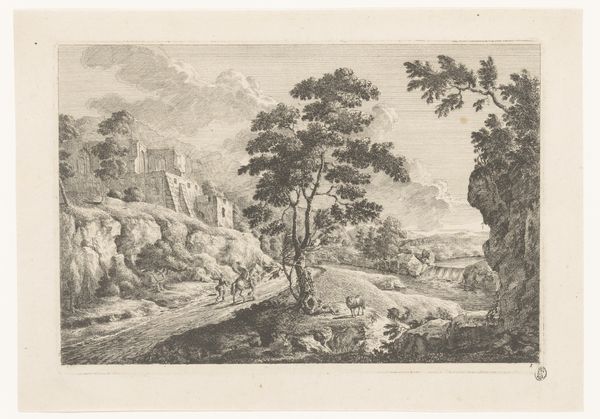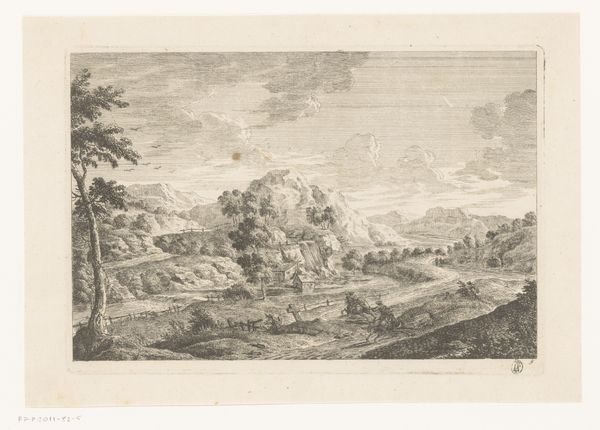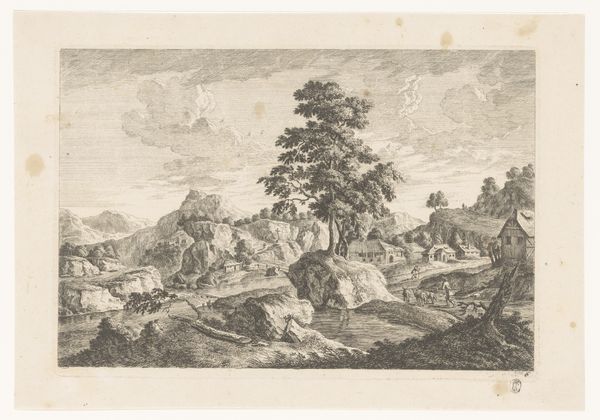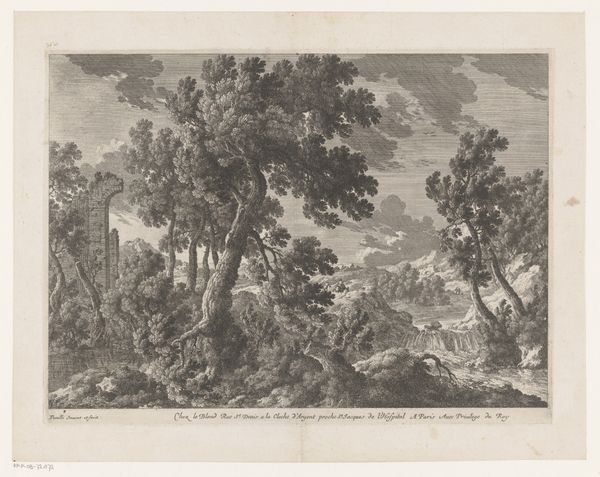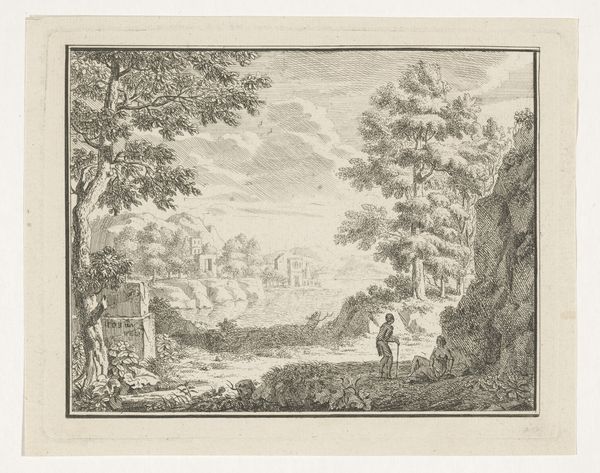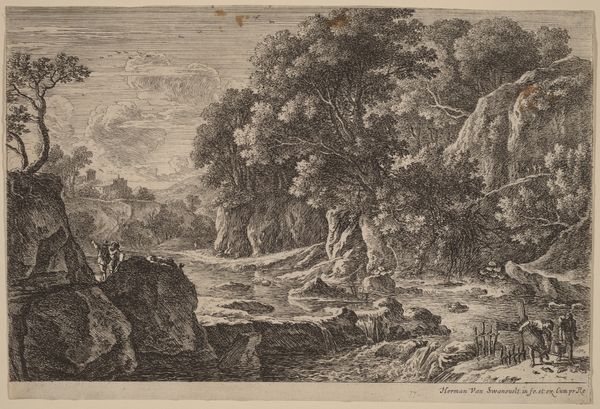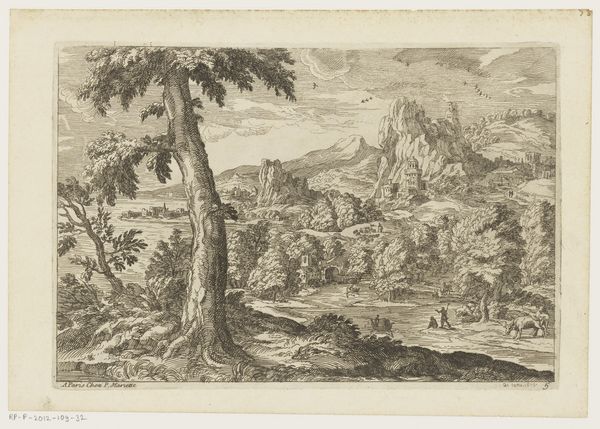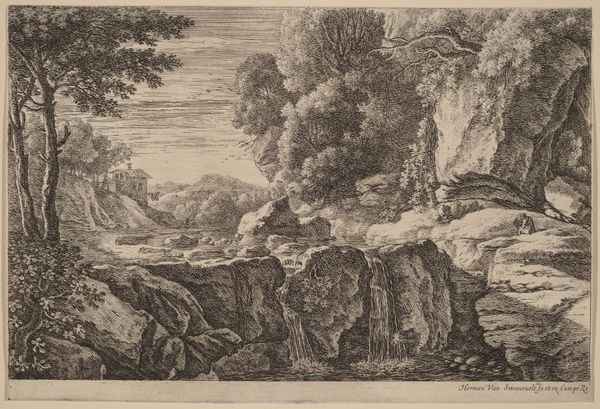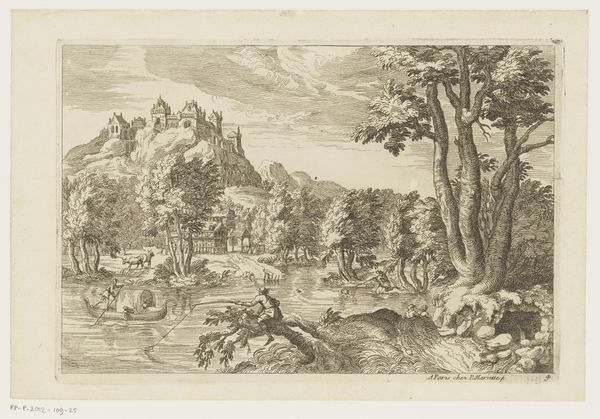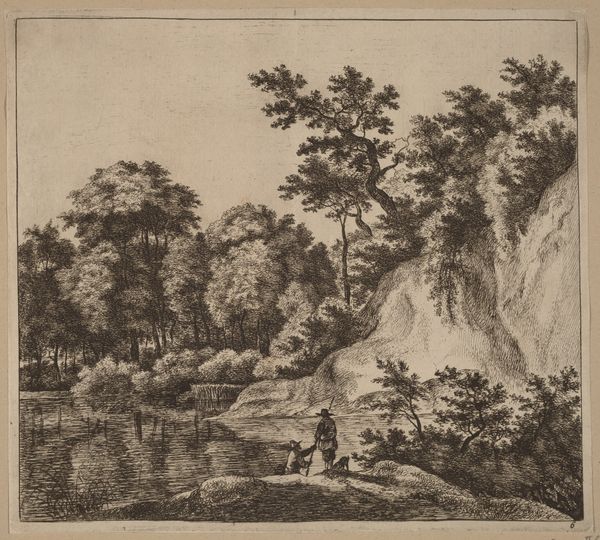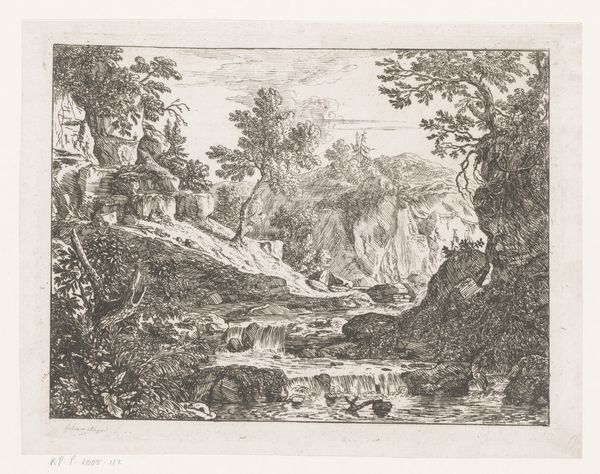
engraving
#
baroque
#
old engraving style
#
landscape
#
engraving
Dimensions: height 201 mm, width 291 mm, height 169 mm, width 247 mm
Copyright: Rijks Museum: Open Domain
Curator: This is a piece called "Berglandschap met rivier," or "Mountainous Landscape with River," created between 1700 and 1730 by Monogrammist MEG. It’s an engraving, showcasing a scene reminiscent of the Baroque style's fondness for dramatic landscapes. Editor: Oh, wow. My first thought is that it's strangely comforting, even though those mountains look pretty imposing. The lone tree sort of bending into the scene gives it a humble feeling. Almost melancholic, but peaceful. Curator: I think that’s a fair reading. The positioning of the figures—almost swallowed by the scale of the landscape—invites considerations around humankind's relationship with the natural world and its representation in early modern European print culture. Consider how the artist renders this through line and tone… Editor: The lines, yeah! So many tiny little lines! You can practically feel the grit of the rocks and the softness of the clouds. But it’s a controlled chaos. Do you think this wildness was intentional? Like, making nature look both beautiful and… unconquerable, maybe? Curator: Absolutely. It resonates with ideas of the sublime prevalent at the time, that paradoxical sense of awe and terror induced by nature. The rugged mountains and expansive sky speak to a force beyond human control. This could also point to subtle colonial undertones... with nature, almost figured as the ‘other’. Editor: I love that interpretation! It definitely adds another layer to it. Makes you think about power, doesn’t it? Art from so long ago can feel pretty present with those connections to colonialism, huh? It's all right there under the surface. I kind of wish that lone, slouching tree would share a secret about this with me, or with the figures... I wonder where they're off to? Curator: Indeed, it is fascinating to consider its continuing relevancy and capacity to spark meaningful discussions about these narratives. I mean, that's why we are looking at art today, isn't it? To try to understand our place in the human story, even through these mediated landscapes? Editor: Precisely. And the way MEG captured that "humbling bigness," well, it just kind of lingers, long after you've moved on. It's that quiet whisper that reminds us of how little space we truly occupy, even if we've made some big historical messes along the way.
Comments
No comments
Be the first to comment and join the conversation on the ultimate creative platform.
